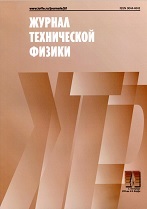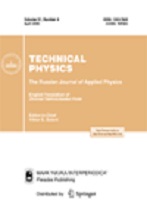|
This article is cited in 6 scientific papers (total in 6 papers)
Solid-State Electronics
The effect of texturing of silicon wafer surfaces for solar photoelectric transducers on their strength properties
V. V. Shpeyzman, V. I. Nikolaev, A. O. Pozdnyakov, A. V. Bobyl', R. B. Timashov, A. I. Averkin, S. E. Nikitin, O. I. Kon'kov, G. G. Shelopin, E. I. Terukov, A. V. Nashchekin
Ioffe Institute, St. Petersburg
Abstract:
An important technological operation for increasing the efficiency of silicon-based solar transducers is the formation of textures on the silicon surface with roughness sizes close to the wavelength of visible light. We consider the influence of various versions of structuring of silicon wafer surfaces on their strength properties. We analyze four types of silicon surface textures: (i) surfaces obtained after selective etching in an alkali solution, (ii) pyramidal textured surfaces, (iii) surfaces textured by oxidation under a thin V$_2$O$_5$ layer, and (iv) surfaces after high-temperature annealing and processing in HF. We have obtained electron-microscopic images of all four textures and have measured their strength of differently textured silicon wafers using the “ring-on-ring” test. The dependences of maximum stresses and deflection under the smaller ring due to loading are calculated using the finite element method. The coincidence of the latter dependence with the experimental results serves as a criterion of the correctness of determining the wafer strength. The mean values and standard deviations of the strength have been calculated for each of the four groups of silicon wafers.
Received: 27.11.2019
Revised: 27.11.2019
Accepted: 15.01.2020
Citation:
V. V. Shpeyzman, V. I. Nikolaev, A. O. Pozdnyakov, A. V. Bobyl', R. B. Timashov, A. I. Averkin, S. E. Nikitin, O. I. Kon'kov, G. G. Shelopin, E. I. Terukov, A. V. Nashchekin, “The effect of texturing of silicon wafer surfaces for solar photoelectric transducers on their strength properties”, Zhurnal Tekhnicheskoi Fiziki, 90:7 (2020), 1168–1174; Tech. Phys., 65:7 (2020), 1123–1129
Linking options:
https://www.mathnet.ru/eng/jtf5262 https://www.mathnet.ru/eng/jtf/v90/i7/p1168
|


| Statistics & downloads: |
| Abstract page: | 69 | | Full-text PDF : | 69 |
|





 Contact us:
Contact us: Terms of Use
Terms of Use
 Registration to the website
Registration to the website Logotypes
Logotypes








 Citation in format
Citation in format 
